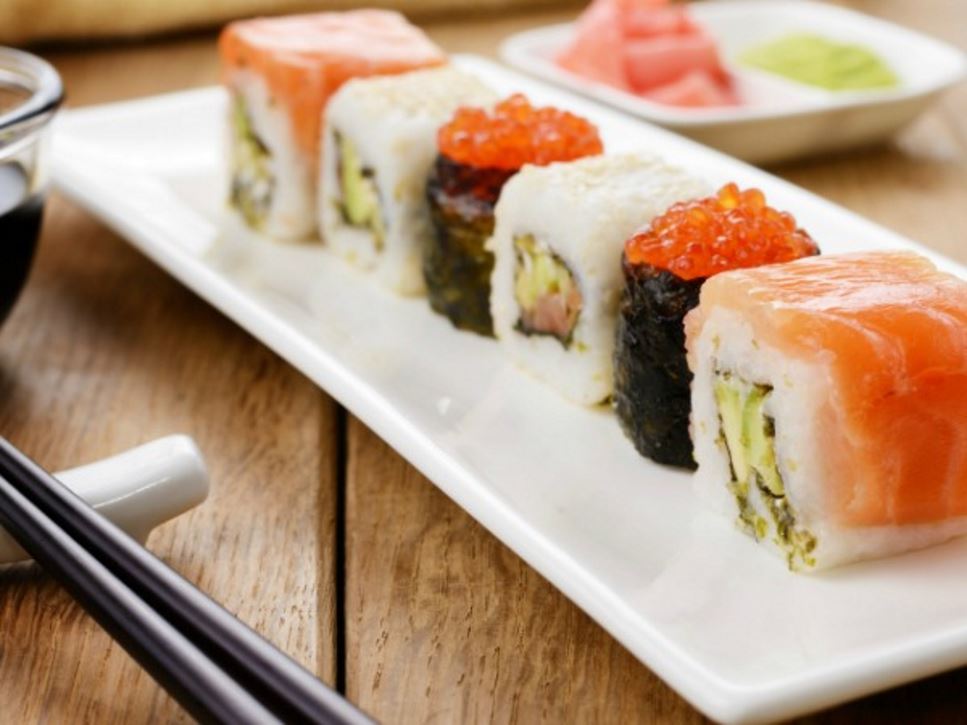Japan has some of the leading life expectancies in the world: 82 years for males and 89 years for females. Japan also boasts the greatest number of centenarians in the world, set to reach 1 million by 2050. Diet has been claimed as the Japanese secret weapon to a long and healthy life. And, one of the most simple and traditional Japanese foods is sushi.
With different types of sushi available, they all have one thing in common — rice. The rice used for sushi is a short-grain rice prepared with vinegar to give it a sticky consistency to help the rice stay together.
- Nigiri — Japan's most popular and basic form of sushi — is a piece of raw fish that is placed on top of a small ball of rice. Although raw fish is the most common, tamago (Japanese rolled omelet), cooked or seared meats or fish and vegetables may be placed on the rice. In Japan, this type of sushi is turned upside down and the fish is dipped in the soy sauce rather than dunking the rice.
- Maki is a sushi roll. Nori, or seaweed, is most commonly used as the wrapper to hold everything inside. Typically, nori is on the outside with rice and a filling in the middle. Rolls are very basic in Japan, ranging from cucumbers to natto (fermented soybeans). In the U.S., it's more common to see rolls with the rice on the outside.
- Gunkanmaki — sometimes called "battleship" style sushi — is a combination of nigiri and maki. The ball of rice is topped with a less-solid filling (for example, uni, oysters or ikura) and held in place by wrapping nori around the outside, forming a rice "ship" bottom and holding the filling on top.
While sushi has the potential to be very healthy, it also has the potential to be loaded with hidden calories. To enjoy the benefits of this healthy Japanese food, try the following:
- Keep it simple. Less is more when it comes to sushi. Nigiri is your best pick. Choose a variety of fish to maximize nutrition benefits and minimize potential buildup of contaminants, including mercury. Avoid restaurants that make their sushi with a lot of rice and skimp on the fish. Note: The FDA recommends pregnant women, older adults, young children and people with weakened immune systems should avoid any raw fish, including sushi
- Choose your rolls wisely. Watch out for fried fillings, mayo, cream cheese and rolls that are "crunchy." Stick with fish and vegetables.
- Minimize soy sauce. It is high in sodium and easy to overuse, and, when possible, choose the "lower sodium" version. When using soy sauce, try dipping the fish, not the rice.
Melinda Boyd, MPH, MHR, RD, is a registered dietitian, author and military spouse living in Japan.
Find a Nutrition Expert
Looking for credible nutrition information and recommendations? The Academy of Nutrition and Dietetics' network of credentialed food and nutrition practitioners are ready to help!
